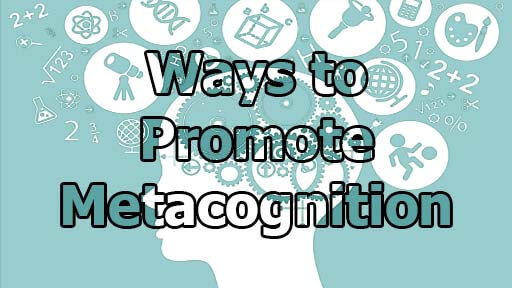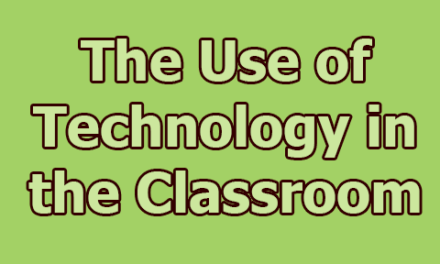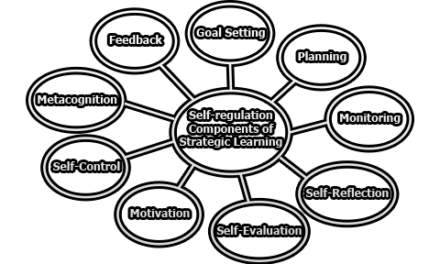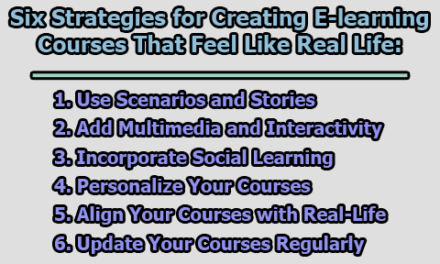Ways to Promote Metacognition:
Metacognition refers to the ability to think about and reflect on one’s own thinking processes. It is an essential aspect of learning and problem-solving, as it allows individuals to understand their strengths and weaknesses, set goals, and monitor their progress toward those goals. Here are some ways to promote metacognition:
Model Metacognitive Thinking: Modeling metacognitive thinking involves sharing your own thinking processes with students or children. For example, if you’re solving a problem or making a decision, you can talk through your thought process out loud, explaining the different steps you’re taking and the reasoning behind your decisions. This can help students or children understand how to approach problems and make decisions themselves. Another example could be when reading a text aloud, you can stop and share how you are making predictions based on what you have read so far and how you are monitoring your understanding.
Provide Opportunities for Reflection: Reflection involves thinking back on an experience and analyzing what went well and what could be improved for next time. One way to promote reflection is by asking open-ended questions such as “What did you learn from this activity?”, “What strategies did you use to solve the problem?”, “How did you approach the task?”. Another example is at the end of a lesson or unit, you can ask students or children to write a reflection on what they have learned, what they found challenging, and how they plan to apply their knowledge in the future.
Teach Metacognitive Strategies: There are several metacognitive strategies that can be taught, such as planning, monitoring, and evaluating. For example, teaching students to set SMART (Specific, Measurable, Achievable, Relevant, and Time-bound) goals can help them develop a clear plan of action for achieving their goals. Similarly, teaching students to monitor their progress towards their goals by checking their understanding as they go along and adjusting their approach if necessary can help them stay on track. Finally, teaching students to evaluate their performance by reflecting on what worked and what didn’t work can help them identify areas for improvement.
Use Graphic Organizers: Graphic organizers are visual tools that can help students or children organize their thoughts and make connections between concepts. For example, a concept map can be used to show the relationships between different ideas or a Venn diagram can be used to compare and contrast different concepts. Using graphic organizers can help students or children see the big picture and understand how different ideas are related.
Provide Feedback: Feedback is an essential component of metacognition as it helps students or children identify areas of strength and areas for improvement. It is important to provide specific, constructive feedback that is tied to the learning objectives. For example, if a student is struggling with a specific concept, provide feedback that focuses on that concept, rather than on other aspects of their performance. Similarly, if a student is doing well, provide positive feedback that reinforces their strengths.
Use Feedback to Promote Reflection: Feedback is a crucial factor to promote metacognition, as it provides students or children with information about their performance and helps them understand their strengths and areas for improvement. However, it is important to use feedback in a way that promotes reflection, rather than simply pointing out mistakes. For example, teachers can provide specific feedback that focuses on the learning process, such as “I noticed that you used a new strategy to solve this problem, can you tell me more about that?” or “I noticed that you worked well with your group members, how did you communicate effectively?”. Similarly, parents can provide feedback that focuses on effort and progress, such as “I am proud of how hard you worked on this project, what strategies did you use to stay focused?” or “I noticed that you have improved your handwriting, how did you practice?”.
Encourage self-assessment: Encouraging self-assessment involves asking students or children to reflect on their own performance and provide feedback to themselves. For example, after completing an assignment, ask students to rate their own performance and explain why they gave themselves that rating. This can help them develop a sense of self-awareness and take responsibility for their own learning.
Encourage collaboration: Collaboration provides opportunities for students or children to discuss their thinking processes and learn from each other. For example, group work can be used to solve a problem or complete a task, with each student contributing their own ideas and strategies. Encouraging collaboration can help students or children develop social skills and learn to work effectively with others, which is a valuable skill in many areas of life.
Encourage Problem-solving: Encouraging problem-solving involves providing opportunities for students or children to solve problems independently and reflect on their thinking process. For example, teachers can present open-ended problems or challenges and encourage students to work collaboratively to develop solutions. Parents can also provide opportunities for children to problem-solve at home, such as asking them to plan and prepare a meal or organize a family outing. Encouraging problem-solving can help students or children develop critical thinking skills, creativity, and resilience.
Use Questioning Techniques: Using questioning techniques involves asking thought-provoking questions that encourage students or children to reflect on their thinking process and deepen their understanding. For example, teachers can ask open-ended questions that promote critical thinking, such as “What evidence supports your argument?”, “What are the implications of your solution?”, or “What would you do differently next time?”. Similarly, parents can use questioning techniques during conversations with their children to encourage reflection and deeper thinking. Using questioning techniques can help students or children develop metacognitive skills and become more independent learners.
Provide Opportunities for Self-directed Learning: Providing opportunities for self-directed learning involves giving students or children the freedom to choose their own learning experiences and set their own goals. For example, teachers can provide project-based learning opportunities that allow students to explore topics of interest and develop their own research questions. Similarly, parents can provide resources and support for their children to pursue their own interests and hobbies. Providing opportunities for self-directed learning can help students or children develop metacognitive skills such as goal-setting, planning, and self-reflection.
Encourage Goal-setting: Encouraging goal-setting involves helping students or children set achievable goals and develop a plan to achieve them. For example, teachers can help students set goals related to their learning, such as improving their writing skills or increasing their understanding of a particular concept. Similarly, parents can help their children set goals related to their personal growth, such as improving their time-management skills or developing a new hobby. Encouraging goal-setting can help students or children develop metacognitive skills such as self-reflection, self-regulation, and motivation.
Teach Students How to Monitor their Own Learning: Teaching students how to monitor their own learning involves helping them develop metacognitive skills that allow them to assess their own learning progress and adjust their strategies accordingly. For example, teachers can teach students how to use self-assessment tools, such as checklists or rubrics, to evaluate their own work. Similarly, parents can help their children develop metacognitive skills by asking questions that encourage reflection, such as “How do you think you are doing in this subject?” or “What strategies have worked well for you in the past?”. Teaching students how to monitor their own learning can help them become more independent learners and develop a growth mindset.
Teach Students How to Reflect on Their Mistakes: Teaching students how to reflect on their mistakes involves helping them understand that mistakes are a natural part of the learning process and can be used as opportunities for growth and improvement. For example, teachers can encourage students to reflect on their mistakes by asking questions such as “What did you learn from this mistake?” or “How can you use this information to improve your performance?”. Similarly, parents can help their children develop metacognitive skills by reframing mistakes as opportunities for growth, rather than as failures. Teaching students how to reflect on their mistakes can help them develop a growth mindset and become more resilient learners.
Use Visual Aids to Support Metacognitive Thinking: Visual aids, such as graphic organizers or mind maps, can be powerful tools to support metacognitive thinking. For example, teachers can provide graphic organizers to help students organize their thoughts and reflect on their learning progress. Similarly, parents can use visual aids to help their children reflect on their experiences and emotions, such as creating a family timeline or a mood board. Using visual aids can help students or children make connections between ideas and develop metacognitive skills such as self-reflection and analysis.
Encourage Metacognitive Dialogue: Encouraging metacognitive dialogue involves providing opportunities for students or children to discuss their thinking process and reflect on their learning. For example, teachers can facilitate class discussions that encourage students to share their ideas and strategies or use peer feedback to help students reflect on their work. Similarly, parents can encourage metacognitive dialogue by asking their children questions that prompt reflection, such as “How did you come up with that idea?” or “What did you learn from this experience?”. Encouraging metacognitive dialogue can help students or children develop their communication skills and learn from others.
Provide Opportunities for Self-directed Learning: Self-directed learning involves giving students or children the autonomy to choose what they want to learn and how they want to learn it. For example, teachers can provide opportunities for students to explore topics that interest them or give them choice in how they complete a project. Similarly, parents can encourage their children to pursue their own interests and provide resources to support their learning. Self-directed learning can help students or children develop metacognitive skills such as self-regulation, goal-setting, and self-reflection.
Use Metacognitive Strategies to Promote Problem-solving: Metacognitive strategies can be used to promote problem-solving skills by helping students or children identify and analyze problems, develop a plan of action, and evaluate their progress. For example, teachers can teach students how to use a problem-solving framework, such as the IDEAL (Identify, Define, Explore, Act, and Look) model. Similarly, parents can help their children develop problem-solving skills by asking questions that encourage them to think critically, such as “What are some possible solutions to this problem?” or “How can we break this problem down into smaller parts?”. Using metacognitive strategies to promote problem-solving can help students or children become more effective problem-solvers and develop a growth mindset.
It is apparent that promoting metacognition is a valuable tool for helping students or children become more effective learners and critical thinkers. By incorporating these strategies into our teaching and parenting practices, we can help our students or children develop important life skills that will serve them well throughout their lives.
References:
- Azevedo, R., & Aleven, V. (2013). International handbook of metacognition and learning technologies. Springer.
- Baker, L. (2010). Metacognition in comprehension instruction. The Guilford Press.
- Barry, K., & King, L. (1998). Beginning teacher thinking: The influence of cognitive dispositions and teacher preparation. Paper presented at the annual meeting of the American Educational Research Association, San Diego, CA.
- Butler, D. L., & Winne, P. H. (1995). Feedback and self-regulated learning: A theoretical synthesis. Review of Educational Research, 65(3), 245-281.
- Carr, M., & Borkowski, J. G. (1989). The effects of cognitive apprenticeship training on learning from texts. Journal of Educational Psychology, 81(2), 231-240.
- Cohen, J. (1988). Statistical power analysis for the behavioral sciences (2nd ed.). Lawrence Earlbaum Associates.
- Dinsmore, D. L., Alexander, P. A., & Loughlin, S. M. (2008). Focusing the conceptual lens on metacognition, self-regulation, and self-regulated learning. Educational Psychology Review, 20(4), 391-409.
- Flavell, J. H. (1979). Metacognition and cognitive monitoring: A new area of cognitive–developmental inquiry. American Psychologist, 34(10), 906-911.
- Hacker, D. J., & Dunlosky, J. (1997). Metacognition in educational theory and practice. Routledge.
- Hmelo-Silver, C. E. (2004). Problem-based learning: What and how do students learn? Educational Psychology Review, 16(3), 235-266.
- Kuhn, D. (1999). A developmental model of critical thinking. Educational Researcher, 28(2), 16-46.
- Martinez, M. E. (2006). What is metacognition? Phi Delta Kappan, 87(9), 696-699.
- Mevarech, Z. R., & Kramarski, B. (2003). The effects of metacognitive training versus worked-out examples on students’ mathematical reasoning. British Journal of Educational Psychology, 73(4), 449-471.
- Paris, S. G., & Winograd, P. (1990). How metacognition can promote academic learning and instruction. The handbook of educational psychology, 2, 475-495.
- Pintrich, P. R. (2002). The role of metacognitive knowledge in learning, teaching, and assessing. Theory into Practice, 41(4), 219-225.
- Schraw, G., & Dennison, R. S. (1994). Assessing metacognitive awareness. Contemporary Educational Psychology, 19(4), 460-475.
- Tanner, K. D. (2012). Promoting student metacognition. CBE-Life Sciences Education, 11(2), 113-120.
- Thiede, K. W., Griffin, T. D., Wiley, J., & Redford, J. S. (2018). Examining the effects of a metacognitive intervention on students’ reading comprehension and calibration accuracy. Metacognition and Learning, 13(2), 155-183.
- Van der Stel, M., & Veenman, M. V. J. (2014). Metacognition in higher education: A meta-analysis. Educational Research Review, 11, 41-65.
- Winne, P. H. (2017). Improving measurements of self-regulated learning. Educational Psychologist, 52(1), 69-84.
- Zimmerman, B. J. (1986). Development of self-regulated learning: Which are the key subprocesses? Contemporary Educational Psychology, 11(4), 307-313.
- Zimmerman, B. J. (1990). Self-regulated learning and academic achievement: An overview. Educational Psychologist, 25(1), 3-17.
- Zimmerman, B. J., & Schunk, D. H. (2001). Self-regulated learning and academic achievement: Theoretical perspectives (2nd ed.). Routledge.
- Zohar, A., & Dori, Y. J. (2013). Metacognition in science education: Trends in current research. International Journal of Science Education, 35(5), 491-505.
- Zohar, A., & Ginossar, S. (2019). Metacognition in authentic learning environments: The value of professional development programs in promoting students’ metacognitive awareness and knowledge. In K. E. Pytash, R. J. Ferdig, & E. C. Merchant (Eds.), The handbook of research on authentic learning in the digital age (pp. 282-303). IGI Global.
- Zohar, A., & Kuhn, D. (2007). For whom is a picture worth a thousand words? Extensions of a dual‐coding theory of multimedia learning. Journal of Educational Psychology, 99(2), 413-431.
- Zohar, A., & Nemet, F. (2002). Fostering students’ knowledge and argumentation skills through dilemmas in human genetics. Journal of Research in Science Teaching, 39(1), 35-62.
- Zohar, A., & Schwartzer, N. (2005). The impact of a metacognitive intervention program on improving students’ learning. British Journal of Educational Psychology, 75(3), 347-361.
- Zohar, A., & Stamovlasis, D. (2019). The power of metacognition for promoting scientific inquiry skills. Educational Psychology Review, 31(1), 185-210.
- Zohar, A., & Weinberger, Y. (2013). The longitudinal relations between knowledge and argumentative writing. Journal of Educational Psychology, 105(3), 740-752.

Library Lecturer at Nurul Amin Degree College










